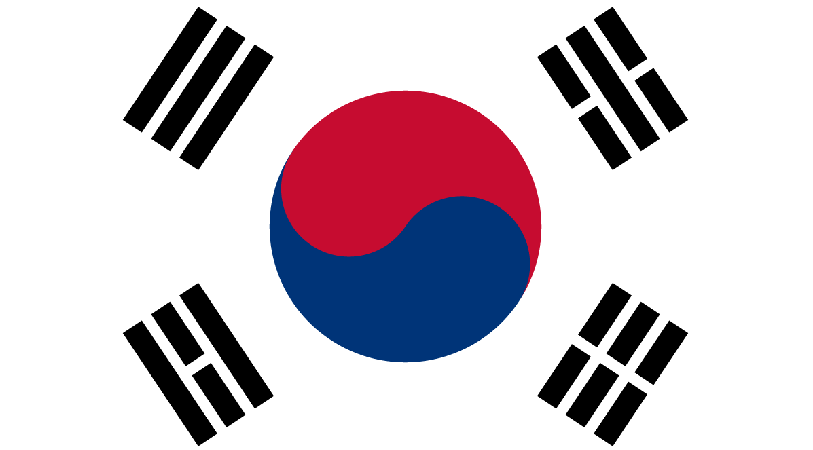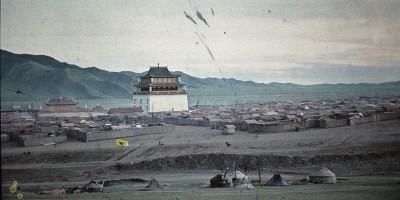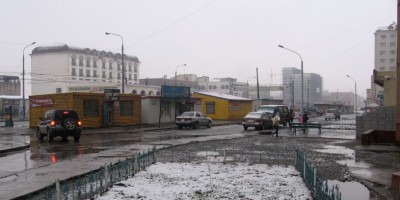Mongolia may be the least densely populated country in the world1 (correction: Mongolia is second behind Greenland – see here), and it may have a reputation for being unimaginably remote in many places. Yet, the reality is Mongolia is not empty and receives its fair share of international visitors each year.
Mongolians are no strangers to international relations. They once ruled much of the Eurasia continent, and they also endured limited autonomy under the dominance of the Qing Dynasty and the Soviet Union. Mongolians pride themselves in their openness towards visitors and readiness to make new friends, and this makes life in Mongolia pleasant if visitors make an effort to reciprocate by doing a few things themselves: learn Mongolian, respect the few customs people take seriously (e.g. don’t make jokes about Chinggis Khaan), and have a good sense of humor about yourself and life. Mongolia is a place to find life-long, enduring friendships, and every year new people discover this for themselves. Among all of Mongolia’s international friends, though, who do Mongolians like most? The answer, of course, is not clear cut, but trying to answer it provides some interesting facts and statistics to bring up over a round of beers with friends at the Grand Khan Irish Pub.
Let’s begin by returning once again to the Sant Maral Foundation’s “Politbarometer” which is a regular survey of public opinion.2 Over the history of the survey respondents have been asked to name two countries that are “best partner[s] for Mongolia.” Taking the weighted average of 18 of the surveys between 2001 and 2012, respondents preferred Russia as a first or second choice by a landslide. But, the United States came in at a distant second followed by Japan. If respondents named a European Union member country, it was counted as part of the European Union total.
| Table 1. Percentage of Responses for “Best Partner” (Naming Two Countries) | |
|---|---|
| Country | Percent |
| Russia | 65 |
| USA | 32 |
| Japan | 26 |
| China | 19 |
| South Korea | 14 |
| European Union | 9 |
| Others | 5 |
| Data source: The Politbaromter Survey 2000-2012 | |
From 2009 the Sant Maral Foundation added a question to the survey which asked “with which country citizens Mongolians are better in communication and cooperation?” Here again Russia takes the top average spot, but surprisingly China comes in a distant second. Moreover, Russia’s position has actually deteriorated while China’s has improved with each survey. I can only wonder what my fellow Americans are doing wrong in this category.
| Table 2. Percentage of Responses for “Best in Communication and Cooperation” | |
|---|---|
| Country | Percent |
| Russia | 55 |
| China | 33 |
| South Korea | 28 |
| Japan | 16 |
| USA | 13 |
| European Union | 5 |
| Others | 3 |
| Data source: The Politbaromter Survey 2009-2012 | |
The National Registration Office regularly publishes data on registered marriages between Mongolians and foreign spouses.3 On this basis, South Korea has been the dominant country over the last decade with everyone else trailing distantly behind. But, the European Union finally makes second place in this category. Vietnam and Pakistan also make an appearance in this category. Huh, who knew?
| Table 3. Marriages between Mongolians and Foreign Nationals 2000-2010 | |
|---|---|
| Country | Marriages |
| South Korea | 4,069 |
| European Union | 587 |
| Japan | 350 |
| China | 278 |
| USA | 178 |
| Russia | 155 |
| Australia | 52 |
| Canada | 33 |
| Ukraine | 29 |
| Vietnam | 26 |
| Pakistan | 20 |
| Turkey | 14 |
| Data source: National Registration Office | |
According to the 2010 National Census, South Korea was the country hosting the most Mongolians for six months or more.4 The public census results only showed the top 20 countries. The European Union took second place, but the count may have been higher if some of the “Other” countries included EU members not in the top 20. India appears in this category, and I have heard vegetarians in Ulaanbaatar should thank this community of Mongolians for the increasing number of vegetarian restaurants in the city.
| Table 4. Mongolians Living in Other Countries for More than Six Months in 2010 | |
|---|---|
| Country | Mongolians |
| South Korea | 29,534 |
| European Union | 24,561 |
| USA | 17,036 |
| Others | 9,822 |
| China | 7,273 |
| Japan | 5,401 |
| Russia | 5,008 |
| Turkey | 2,645 |
| Kazakhstan | 2,523 |
| Canada | 1,259 |
| India | 1,116 |
| Australia | 962 |
| Data source: 2010 National Census | |
Examining the question from the other direction, what countries produce the most tourists or short-term visitors to Mongolia? The National Tourism Center under the Minister of Environment and Tourism published statistics showing China taking the top spot for short-term visitors in 2011.5 Chinese and Russian visitors accounted for more than half of all short-term visitors during the year with more than 300,000. That’s more than 10 percent of Mongolia’s entire population!
| Table 5. Foreign Visitors to Mongolia in 2011 | |
|---|---|
| Country | Visitors |
| China | 198,191 |
| Russia | 102,733 |
| South Korea | 43,994 |
| European Union | 23,235 |
| USA | 15,423 |
| Japan | 14,988 |
| Kazakhstan | 7,913 |
| Australia | 7,093 |
| Data source: The National Tourism Center | |
Going a step further, who does Mongolia host the most for longer than six months? Returning to the 2010 census, China had the most residents in Mongolia, actually accounting for more than half of all foreign residents in the country.6 I was living in Madison, WI at the time of the census, so I failed to contribute to the USA count.
| Table 6. Foreign Residents in Mongolia for More than Six Months in 2010 | |
|---|---|
| Country | Residents |
| China | 8,688 |
| Others | 2,980 |
| Russia | 2,474 |
| South Korea | 1,522 |
| USA | 656 |
| Data source: 2010 National Census | |
Mongolia seems to have a special relationship with its two neighbors Russia and China (obviously), and South Korea also seems to have a growing influence in Mongolia’s international relationships on a person-to-person level. I am disappointed to see the United States lagging in some areas, so I am going to tip the scale in its favor by asking who has provided the most volunteers to Mongolia over the last two decades. Not surprisingly Peace Corps dominates its two main rivals VSO and JICA.
| Table 7. Volunteers in Mongolia Since the Early 1990s | |
|---|---|
| Organization | Volunteers |
| Peace Corps (USA) | over 1,0007 |
| VSO (British Commonwealth) | over 4008 |
| JICA (Japan) | over 3509 |
| Data sources: Peace Corps, VSO, and JICA | |
That’s a lot of Americans living in gers, speaking Mongolian, and working with local agencies to improve services, so clearly on this basis Mongolia and the USA have a very, very special relationship unmatched by any other country. Hey, it’s not me saying this, the numbers speak for themselves.
Footnotes
1. “Population Density”, Wikipedia, http://en.wikipedia.org/wiki/Population_density, (accessed February 14, 2013).
2. See: “Politbarometer”, The Sant Maral Foundation, http://www.santmaral.mn/.
3. “Гадаадын иргэдтэй гэр бүл болсон монгол иргэдийн судалгаа / иргэдтэй нь хамгийн их гэрлэсэн 20 орон/”, National Registration Office, http://www.registrationmongolia.com/index.php?option=com_content&view=article&id=622:————–20-&catid=53:statistic-medee&Itemid=253, (accessed February 13, 2013).
4. “2010 Census Main Results”, National Statistics Office, http://www.toollogo2010.mn/doc/Main%20results_20110615_to%20EZBH_for%20print.pdf, slides 47-48.
5. “2011 онд ирсэн жуулчдын мэдээг өнгөрсөн оны мөн үетэй харьцуулсан мэдээ”, National Tourism Center, http://mongoliatourism.gov.mn/info/page/250/, (accessed February 13, 2013).
6. “2010 Census Main Results”, National Statistics Office, http://www.toollogo2010.mn/doc/Main%20results_20110615_to%20EZBH_for%20print.pdf, slide 24.
7. “Mongolia”, Peace Corps, http://www.peacecorps.gov/learn/wherepc/asia/mongolia/, (accessed February 13, 2013).
8. “Mongolia”, VSO, http://www.vso.org.uk/about/where-we-work/mongolia, (accessed February 13, 2012).
9. “Major Projects in Mongolia: JICA volunteers”, JICA, http://www.jica.go.jp/mongolia/english/activities/activity16.html, (accessed February 13, 2012).



